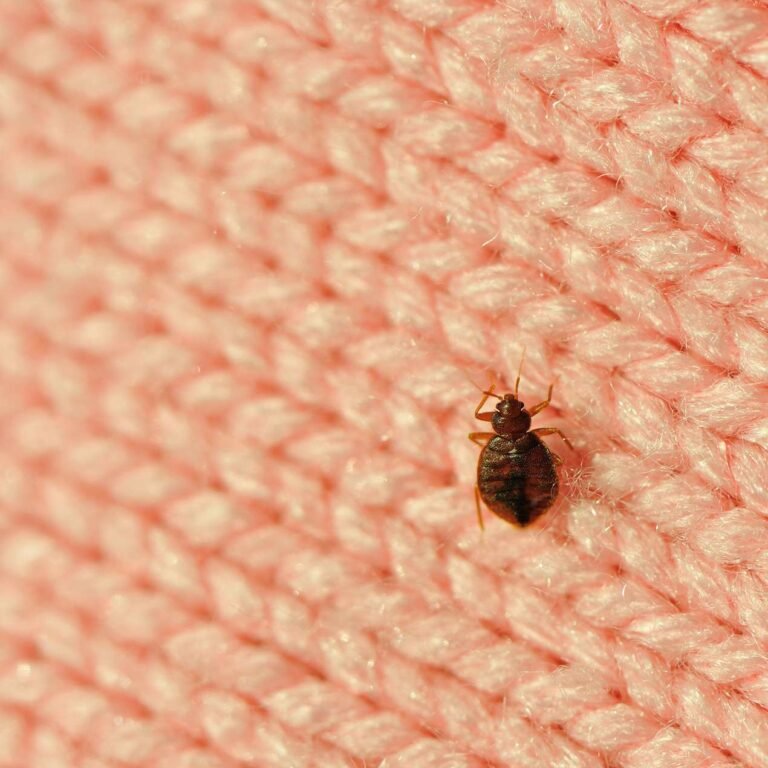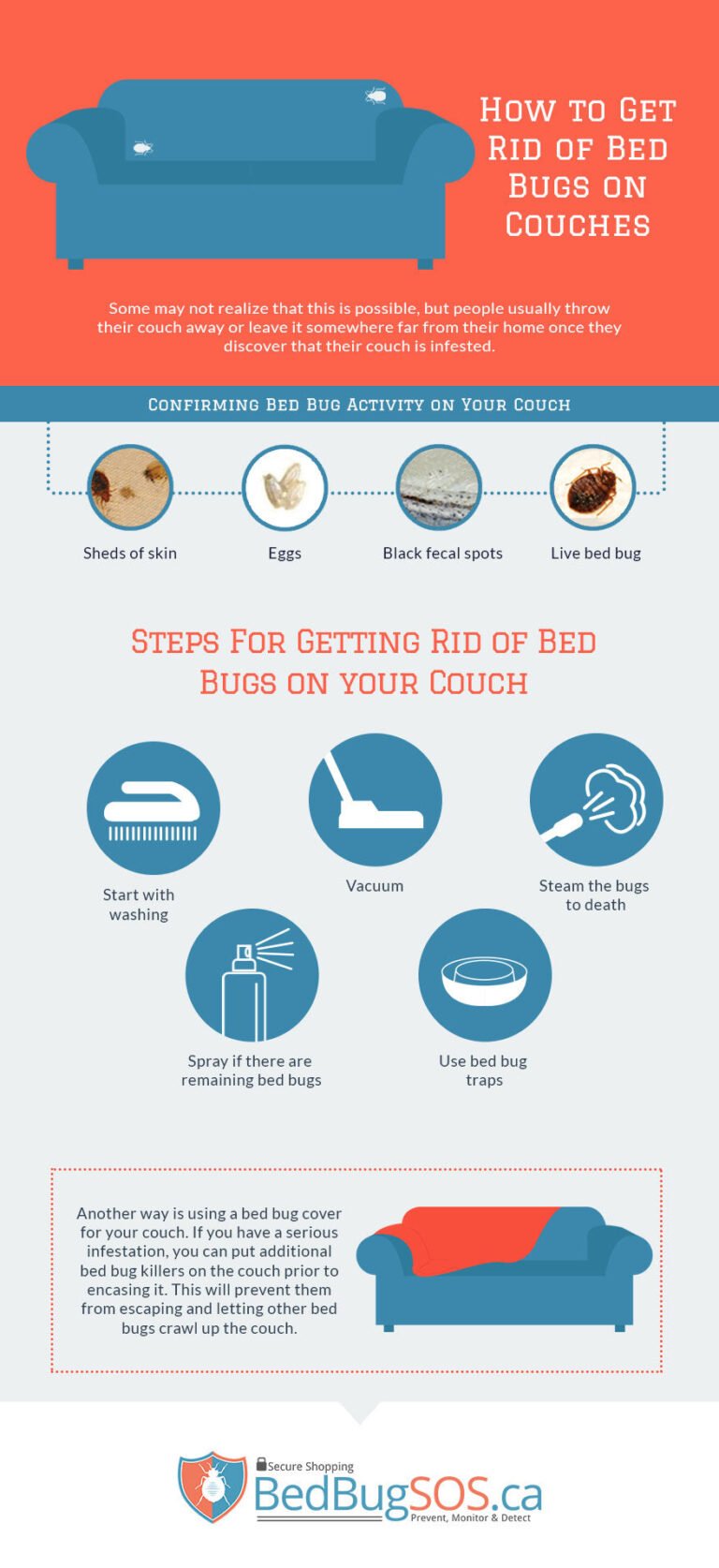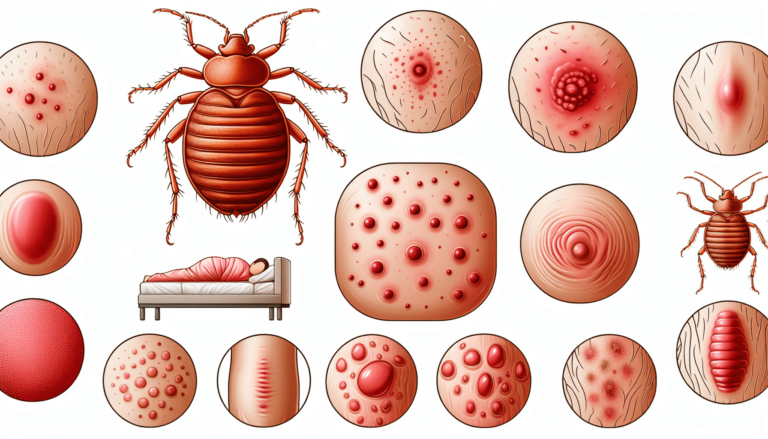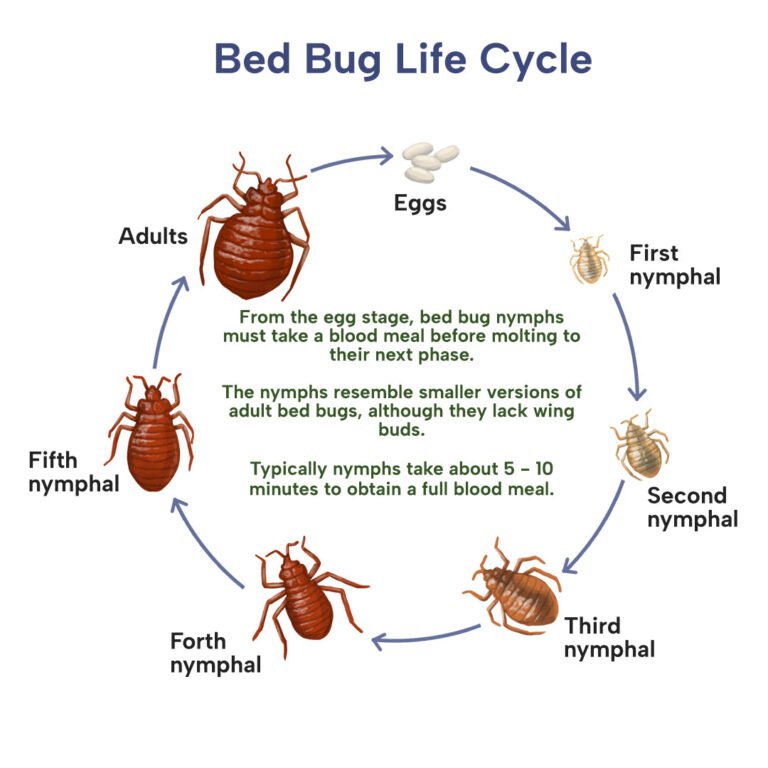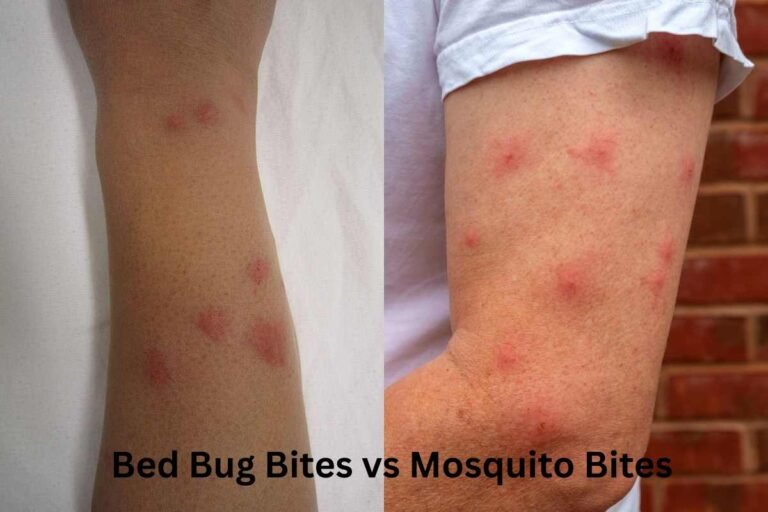Where Do Bed Bugs Go and How to Get Rid of Them?
Bed bugs, those elusive pests that can wreak havoc on your sleep and peace of mind. You may be wondering, where do these tiny intruders go when they’re not busy feasting upon your blood? And more importantly, how can you get rid of them? In this informative article, we will delve into the secret hideouts of bed bugs and provide you with expert advice on how to eliminate them from your home. Get ready to uncover the mysteries of these pests and reclaim your sanctuary.

Understanding Bed Bugs
Bed bugs are small, parasitic insects that belong to the Cimicidae family. They are nocturnal pests that feed on the blood of humans and animals. Bed bugs are known for their ability to survive in various environments and their tendency to infest beds and other furniture.
Defining Bed Bugs
Bed bugs, scientifically known as Cimex lectularius, are flat, oval-shaped insects that range in size from 1 to 7 millimeters. They are wingless and have a reddish-brown color, which can turn to dark brown after feeding. These pests have a specialized mouthpart called a proboscis, which they use to pierce the skin to extract blood.
Characteristics of Bed Bugs
One of the distinguishing characteristics of bed bugs is their strong odor. They release a musty scent that is often described as smelling like coriander. This odor is produced by glands located on the lower side of the bed bug’s body. Additionally, bed bugs have a segmented abdomen and small, hook-shaped hairs on their legs that help them cling to surfaces.
Life Cycle of Bed Bugs
Bed bugs go through a gradual metamorphosis, which means they undergo three stages of development: egg, nymph, and adult. Female bed bugs can lay hundreds of eggs in her lifetime, which are tiny and difficult to see with the naked eye. The eggs usually hatch within one to two weeks, and the nymphs emerge. Nymphs resemble smaller, lighter versions of adult bed bugs and go through five molts before reaching adulthood.
Feeding Habits of Bed Bugs
Bed bugs are nocturnal insects that are primarily active at night. They are attracted to the carbon dioxide humans exhale and the warmth of our bodies, making beds an ideal place for them to feed. Bed bugs use their proboscis to pierce the skin and inject anticoagulant saliva, which prevents the blood from clotting. They usually feed for about five to ten minutes before returning to their hiding spots.
Typical Habitats of Bed Bugs
Bed bugs have a strong preference for human habitats, particularly bedrooms where people spend a significant amount of time sleeping. However, they can also be found in other areas of the home or in public spaces such as hotels and movie theaters.
Bed Bug Preference for Human Habitats
Bed bugs are attracted to the warmth and carbon dioxide that humans generate. They are most commonly found in beds, particularly in the seams, folds, and crevices of mattresses, box springs, headboards, and bed frames. However, they can also infest other furniture, such as chairs, couches, and nightstands.
Common Hiding Places in Bedrooms
Apart from beds, bed bugs can hide in a variety of places in a bedroom. These include cracks and crevices in walls, baseboards, and furniture. They can also be found in electrical outlets, behind wallpaper, and in the folds of curtains or drapes. Additionally, bed bugs can infest cluttered areas, such as piles of clothes or books, providing them with more hiding spots.
Bed Bug Habitats Outside the Bedroom
While bed bugs tend to infest bedrooms, they can also be found in other areas of the home. They can hide in living rooms, particularly in upholstered furniture, such as couches and armchairs. Bed bugs can also infest offices, schools, hospitals, and public transportation, as they can easily hitch a ride on clothing, bags, or other personal belongings.
How Bed Bugs Spread and Travel
Bed bugs have various ways of spreading and traveling from one location to another. Understanding these methods of infestation is crucial in preventing their spread.
Natural Movement of Bed Bugs
Bed bugs can move short distances on their own, crawling between rooms or adjacent areas. They are capable of climbing walls and ceilings and can travel through tiny cracks and crevices. However, their ability to move long distances through open spaces is limited, and they rely on other means of transportation for larger movements.
Spread of Bed Bugs Through Travel
One of the most common ways bed bugs spread is through travel. They can hitch a ride on luggage, clothing, or bedding, allowing them to be transported from infested areas to clean environments. Hotels, airports, and public transportation hubs are common locations where bed bug infestations can occur, as these pests can easily transfer between people’s belongings.
Infestation Through Second-Hand Furniture
Another way bed bugs can spread is through the purchase or acquisition of second-hand furniture. Bed bugs can hide in the cracks and crevices of furniture, waiting to infest a new home. It is important to thoroughly inspect any used furniture before bringing it into your home and to take precautions when disposing of infested items to prevent further spread.
Signs of Bed Bug Infestations
Detecting bed bug infestations early is crucial in preventing their spread and minimizing the impact on your home and health. There are several signs to look out for that indicate the presence of bed bugs.
Bed Bug Bites
One of the most common signs of a bed bug infestation is the presence of bites on your skin. Bed bug bites are usually itchy and can appear as small, red welts in a clustered or linear pattern. However, it is important to note that not everyone reacts to bed bug bites, so the absence of bites does not necessarily mean there are no bed bugs present.
Signs of Bed Bug Fecal Matter
Bed bugs leave behind dark brown or black fecal matter, commonly referred to as bed bug droppings. These tiny specks can be found on bedding, mattresses, furniture, or in cracks and crevices. Bed bug fecal matter is often described as resembling pepper or coffee grounds and can smudge when touched.
Discovery of Bed Bug Eggs or Shells
Bed bug eggs are a telltale sign of an infestation. They are small, approximately 1mm in size, and are often laid in clusters or in hidden locations. Bed bug eggs are white to translucent in color and have a sticky texture, allowing them to adhere to surfaces. Additionally, the presence of molted bed bug skins, which are remnants of the nymphs shedding their exoskeletons, is indicative of an infestation.
Presence of Bed Bugs in Unusual Locations
While bed bugs are commonly found in beds and furniture, they can infest other areas of a home or building. Look for signs of bed bugs in areas such as electrical outlets, behind wallpaper, along baseboards, or in the cracks and crevices of walls. Unusual locations like alarm clocks, picture frames, or even inside books should also be inspected for bed bug activity.
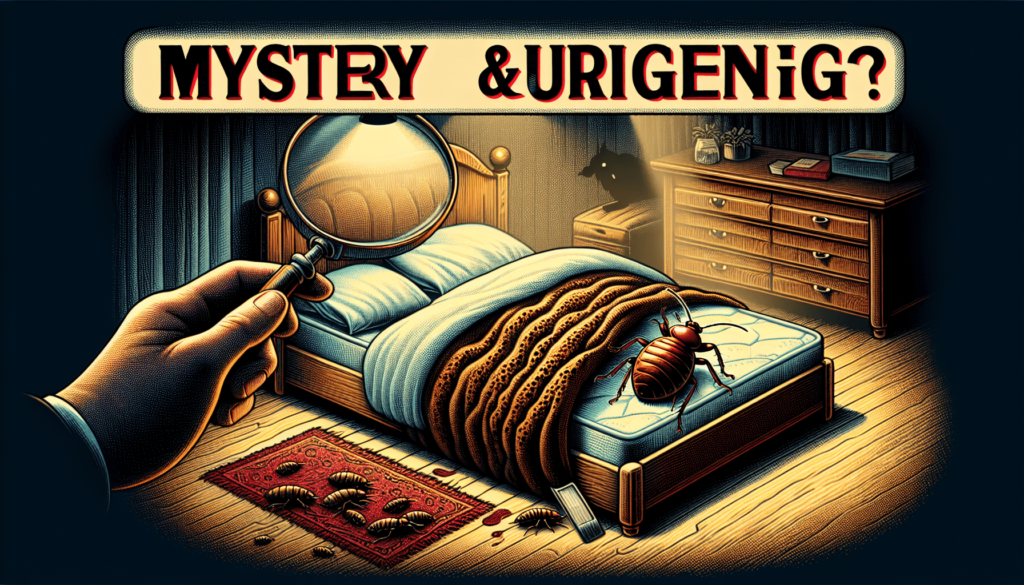
Health Issues Related to Bed Bugs
Bed bug infestations can have various health implications, both physical and psychological. Understanding these health issues is essential in dealing with an infestation effectively.
Allergic Reactions to Bed Bug Bites
Some individuals may have an allergic reaction to bed bug bites, resulting in symptoms such as severe itching, swelling, or blistering. In rare cases, bed bug bites can lead to anaphylaxis, a severe allergic reaction that requires immediate medical attention. If you experience a severe allergic reaction to bed bug bites, seek medical help promptly.
Sleep Disturbances Due to Bed Bug Infestations
Bed bug infestations can cause significant sleep disturbances for those affected. The fear of being bitten can lead to anxiety, insomnia, and a decline in overall sleep quality. Lack of quality sleep can have numerous negative effects on health and well-being, including fatigue, difficulty concentrating, and compromised immune function.
Psychological Impacts of Bed Bug Infestations
Bed bug infestations can also take a toll on mental health. The presence of these pests can cause stress, anxiety, and embarrassment. Living with the constant fear of bed bugs can be emotionally challenging, leading to increased levels of stress and a decreased sense of well-being. Seeking support from professionals or support groups can be beneficial in managing the psychological impacts of an infestation.
Preventive Measures Against Bed Bugs
Taking proactive measures to prevent bed bug infestations is crucial in maintaining a pest-free environment. By following these preventive measures, you can minimize the risk of bed bugs entering your home.
Regular Cleaning and De-cluttering
Regularly vacuuming and cleaning your home, particularly in areas where bed bugs are likely to hide, can help eliminate these pests and their eggs. Focus on vacuuming mattresses, box springs, bed frames, and upholstered furniture. Decluttering your living space and minimizing hiding spots can also deter bed bugs from settling in.
Proper Handling of Second-Hand Furniture
When acquiring second-hand furniture, thoroughly inspect it for signs of bed bugs before bringing it into your home. Pay close attention to cracks, crevices, and seams where these pests may hide. If infested furniture is suspected, do not bring it inside your home, as it can lead to an infestation.
Pest Control Measures for Travelers
If you frequently travel or stay in places with a higher risk of bed bug infestations, taking preventive measures is essential. Inspect hotel rooms and accommodations for signs of bed bugs before unpacking. Keep luggage elevated and away from beds and furniture. Upon returning home, immediately wash and dry all clothing on high heat to kill any potential bed bugs.
Getting Rid of Bed Bugs
If you find yourself facing a bed bug infestation, it is important to take swift action to eliminate these pests. There are several approaches you can take to get rid of bed bugs effectively.
Professional Pest Control Solutions
Engaging the services of a professional pest control company is often the most effective way to eradicate a bed bug infestation. Pest control professionals have the knowledge, experience, and specialized equipment to effectively eliminate bed bugs. They can employ a combination of treatments such as insecticide applications, heat treatments, and steam treatments to eradicate bed bugs at all stages of their life cycle.
Diatomaceous Earth Usage
Diatomaceous earth is a natural powder made from fossilized remains of diatoms, which are tiny aquatic organisms. When applied to areas infested with bed bugs, the microscopic sharp edges of diatomaceous earth damage the pests’ exoskeleton, leading to dehydration and death. It is important to use food-grade diatomaceous earth and follow safety precautions when applying it.
Home Remedies for Bed Bug Infestations
There are various home remedies that people may try to eliminate bed bugs, although their effectiveness may vary. Some common home remedies include using essential oils such as tea tree oil or lavender oil, washing bedding and clothing in hot water, and using mattress encasements to trap and starve bed bugs. It is important to note that while these remedies may provide temporary relief, they may not completely eradicate a bed bug infestation.
Heat Treatment for Bed Bug Eradication
Heat treatment is an effective method of killing bed bugs and their eggs. Exposing infested items to high temperatures, typically above 120 degrees Fahrenheit, can kill bed bugs in all stages of their life cycle. Professional pest control companies may use specialized equipment such as heat chambers or steamers to heat treat infested areas.
Aftermath of a Bed Bug Infestation
Even after successfully eliminating a bed bug infestation, there are important steps to take to prevent a recurrence and address any lingering concerns.
Physical Cleaning and Vacuuming Post-Treatment
After a professional treatment or DIY eradication effort, it is crucial to thoroughly clean and vacuum the affected areas. Dispose of the vacuum bag or clean the canister and brush to prevent any remaining bed bugs or eggs from re-infesting your home. Launder all bedding, linens, and clothing that may have come into contact with bed bugs, using hot water and high heat drying.
Monitoring for Recurring Infestations
Vigilance is key in preventing a re-infestation of bed bugs. Continually monitor your home for signs of bed bugs, particularly in bedrooms and areas where you spend a significant amount of time. Regularly inspect bedding, furniture, and cracks and crevices for any signs of bed bug activity. If you suspect a re-infestation, promptly contact a professional pest control company for further assistance.
Mental Health Implications and Support Post-Infestation
Dealing with a bed bug infestation can take a toll on one’s mental health. It is important to address any feelings of anxiety, stress, or embarrassment that may arise during or after an infestation. Seeking support from friends, family, or mental health professionals can provide valuable assistance in navigating the emotional impact of a bed bug infestation.
Interesting Facts and Stats on Bed Bugs
Bed bugs have a long history and continue to be a pervasive pest worldwide. Here are some interesting facts and stats about bed bugs:
Historical Facts About Bed Bugs
- Bed bugs have been a nuisance to humans for thousands of years. They have been mentioned in ancient Egyptian writings, and evidence of bed bug infestations has been found in fossilized remains dating back to 3,500 years ago.
- In the mid-20th century, the use of DDT and other insecticides drastically reduced bed bug populations in developed countries. However, widespread pesticide resistance and changes in pest control practices contributed to the resurgence of bed bugs in recent decades.
Global Stats on Bed Bug Infestations
- According to a study conducted by the National Pest Management Association (NPMA) and the University of Kentucky, 97% of pest control professionals have treated bed bug infestations in the United States.
- Bed bug infestations are not limited to the United States. They are a global problem, with infestations reported in countries around the world, including Europe, Asia, Africa, and Australia.
- The World Health Organization (WHO) has recognized bed bugs as a public health concern due to the potential physical and psychological impacts they can have.
Most Infested Cities in the World
- While bed bugs can be found in cities around the world, certain locations tend to have higher infestation rates. New York City has consistently ranked among the most infested cities in the United States, followed by other metropolitan areas such as Los Angeles, Chicago, and Detroit. Internationally, cities like London, Toronto, and Sydney have also reported high bed bug infestation rates.
Quiz: Test Your Knowledge on Bed Bugs
Now that you have learned about bed bugs and their behavior, it’s time to test your knowledge. Take this short quiz to assess your understanding of these pesky pests.
Quiz Introduction
Welcome to the bed bug quiz! This quiz will test your knowledge on bed bugs, including their habits, characteristics, and preventive measures. Answer the following five questions to see how well you know these pests.
Quiz Questions:
- What is the scientific name for bed bugs?
- What are the signs of a bed bug infestation?
- How do bed bugs travel and spread?
- What are the health issues related to bed bug infestations?
- What are some preventive measures against bed bugs?
Answers and Explanations:
- The scientific name for bed bugs is Cimex lectularius.
- The signs of a bed bug infestation include bed bug bites, presence of fecal matter (dark brown or black specks), discovery of bed bug eggs or shells, and finding bed bugs in unusual locations.
- Bed bugs can travel and spread through natural movement, hitchhiking on people or belongings during travel, and infestation through second-hand furniture.
- Health issues related to bed bug infestations include allergic reactions to bed bug bites, sleep disturbances, and psychological impacts such as stress and anxiety.
- Preventive measures against bed bugs include regular cleaning and de-cluttering, proper handling of second-hand furniture, and pest control measures for travelers.
Congratulations on completing the bed bug quiz! How did you score? Test your friends and see who knows the most about these pesky pests.
In conclusion, understanding bed bugs is crucial in preventing and dealing with infestations. By familiarizing yourself with their characteristics, habitats, and signs of infestation, you can take appropriate measures to protect your home and health. Remember, if you suspect a bed bug infestation, it is best to seek professional help for effective eradication. Stay informed, stay vigilant, and sleep tight, knowing that you are equipped to combat bed bugs.

